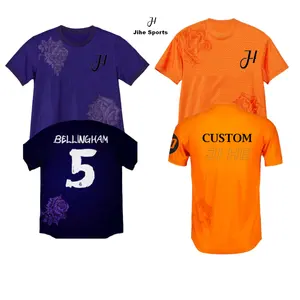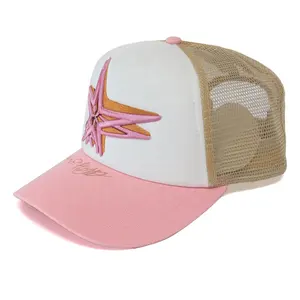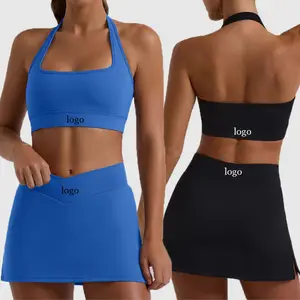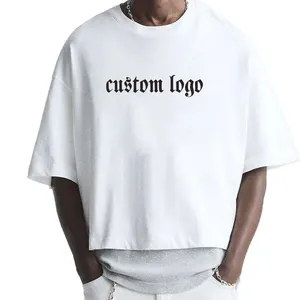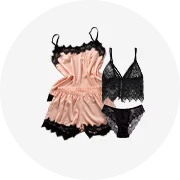Popular in your industry




























































































 Ready to Ship
Ready to Ship





 Ready to Ship
Ready to Ship

















 Ready to Ship
Ready to Ship







































 Ready to Ship
Ready to Ship



























 Ready to Ship
Ready to Ship











Top categories
About palestine hijab
In the intricate weave of Palestinian culture, the hijab stands out as a garment rich in significance, embodying the intersection of tradition and modernity. 'Tradition Meets Trend: Exploring the Versatile World of Palestine Hijabs' delves into this cultural icon's evolution from a symbol of identity to a fashion statement embraced on global platforms. As we unravel the threads of the Palestine hijab's story, we discover its transformation—a reflection of Palestinian resilience and adaptability, where each fold and pattern narrates a tale of heritage, ideology, and contemporary flair.
The Cultural Significance of Hijabs in Palestine
The hijab in Palestine, particularly in Gaza, carries a rich tapestry of cultural significance, symbolizing various aspects of identity, including class, regional background, and religion. Historically, the forms and meanings of the hijab have been fluid, reflecting ongoing cultural transformations. For instance, the traditional dress and headcovering of older camp women in Gaza represent their peasant origins and status as camp women, signifying class and group identity rather than gender.
In the late 1970s, new Islamic movements began to ascribe new meanings to the hijab, associating it with piety and political affiliation. This period saw the emergence of the 'shari‘a' dress, a long, plain, tailored overcoat without precedent in indigenous Palestinian dress, representing an 'invented tradition.' This form of hijab became an instrument of ideological expression, particularly by movements which linked the hijab to a reactionary ideology about women's roles in society.
The intifada period marked a significant shift, as social pressures and campaigns actively promoted the hijab's adoption by all women, transforming it into a symbol of political commitment and respect for martyrs. This redefinition of the hijab as a nationalistic symbol, however, was met with resistance from some women who viewed the enforcement of the hijab as a form of oppression, rather than a voluntary expression of cultural or religious identity.
Palestine Hijabs on Alibaba: A Fusion of Tradition and Trend

The Palestine hijab collection beautifully encapsulates the essence of Palestinian heritage while embracing contemporary fashion trends. These hijabs are more than just headscarves; they are a statement of cultural identity, infused with modern aesthetics to appeal to a global audience. The range includes traditional patterns like the iconic Keffiyeh print, symbolizing Palestinian pride, alongside more modern designs that feature subtle embellishments and a variety of color palettes. From the classic cotton jersey hijabs to luxurious chiffon options, each piece is crafted to provide both comfort and style. The inclusion of lightweight materials and soft textures ensures that these hijabs are suitable for all-day wear, while the diverse designs make them versatile for both casual and formal settings. Streamlined for the fashion-forward consumer, these hijabs merge the rich tapestry of Palestinian culture with the dynamic nature of current fashion trends, offering a selection that is both respectful of tradition and aligned with contemporary style preferences.
Varieties of Palestine Hijabs Available
The platform showcases a diverse array of Palestinian hijabs, reflecting a blend of traditional elements and contemporary fashion. Among the offerings, customers can find the classic Palestinian print Keffiyeh hijab, a symbol of heritage and identity, reimagined in various fabrics such as lightweight chiffon and comfortable jersey. The selection includes elegant options adorned with rhinestones, catering to those seeking a touch of luxury in their wardrobe.
For everyday wear, there are instant hijabs made from soft, stretchy cotton jersey, providing ease of use and a snug fit. These are available in solid colors, as well as in more elaborate designs featuring delicate beading and sequins, suitable for both casual and formal settings. The range extends to include woolen hijabs, offering warmth and comfort during cooler seasons, and chic leopard print chiffon hijabs that add a fashionable edge to the traditional headwear.
The platform also presents a variety of hijabs that cater to different preferences and needs, such as the Kuwaiti cotton hijabs known for their breathability and the pashmina shawls that combine warmth with a luxurious feel. For those seeking practicality without compromising on style, there are beanie-style undercap hijabs and multi-layered options that provide added coverage and sophistication.
Material and Design: Crafting Comfort and Style
The Palestine hijab collection showcases a variety of materials that cater to both comfort and style. The use of soft, breathable fabrics like cotton jersey ensures a comfortable fit for daily wear, while the inclusion of luxurious chiffon offers a more elegant touch for special occasions. The designs integrate traditional elements with modern aesthetics, featuring a range of colors and patterns that reflect the rich cultural heritage. Some hijabs are adorned with subtle embellishments such as rhinestones, adding a contemporary flair to the traditional attire. The craftsmanship of these hijabs is evident in the attention to detail, from the precision of the cut to the quality of the stitching, ensuring that each piece is both durable and fashionable. The versatility of the designs means that they can be styled in various ways, making them a practical choice for women who value both tradition and trend in their wardrobe.
Incorporating Modern Trends into Traditional Hijabs
The hijab fashion scene is continually evolving, blending traditional elements with contemporary trends. Designers are pushing the boundaries by introducing innovative cuts and styles that resonate with modern aesthetics while respecting cultural heritage. This fusion is evident in the way traditional hijab styles are being reimagined with bold colors and prints, allowing for personal expression within the framework of modest fashion.
Experimentation is key in modern hijab fashion. Mixing and matching different styles, textures, and fabrics, such as combining a floral hijab with a polka dot blouse, is encouraged to create a unique look. The incorporation of sustainable practices into the design and production of hijabs is also gaining traction, reflecting a growing consumer awareness of ethical and responsible fashion.
Cultural diversity is celebrated through the fusion of different traditional motifs and contemporary designs. For instance, hijabs featuring Japanese prints or African-inspired colors showcase the beauty of global influences while maintaining the essence of Palestinian tradition. This blend of cultures enriches the hijab fashion landscape, offering a plethora of choices for personal styling.
The modern hijab is not just a symbol of cultural identity but also a canvas for fashion-forward experimentation. By embracing innovative materials like silk, velvet, and chiffon, hijab wearers can create sophisticated looks that stand out. The trend encourages a mix of unexpected textures and layers, providing both visual interest and practicality for different climates and occasions.
Applications: From Daily Wear to Special Occasions
The Palestinian hijab style is characterized by a tightly wrapped scarf that ensures full coverage of the hair and neck, reflecting the cultural importance of modesty in the region. Typically, an undercap is worn beneath the hijab, which not only adds volume but also aids in keeping the hijab securely in place throughout the day. This practical aspect of the Palestinian hijab makes it suitable for daily wear, as it provides comfort and stability for the wearer. Moreover, the elegance of the tightly wrapped style allows it to transition seamlessly into attire for special occasions. The simplicity of the design lends itself to being dressed up with accessories or paired with more formal attire, making the Palestinian hijab a versatile choice for women who value both tradition and style in their everyday and celebratory dress.
Advantages of Sourcing Palestine Hijabs from Alibaba.com

Sourcing Palestine hijabs from Alibaba.com presents a unique opportunity for businesses to access a diverse range of traditional and contemporary styles. The platform offers an extensive selection of hijabs that cater to various preferences, including the classic Palestinian Keffiyeh, elegant chiffon options with modern prints, and the luxurious feel of jersey and pashmina materials. These hijabs come in various designs, from plain and understated to those embellished with rhinestones, catering to both daily wear and special occasions.
Alibaba's collection showcases the versatility of the hijab, blending traditional Palestinian elements with modern fashion trends. This fusion ensures that the hijabs are not only culturally significant but also appeal to contemporary aesthetics. The availability of ready-to-ship products streamlines the purchasing process, allowing for quick and efficient stocking of diverse styles. Moreover, the platform's global reach connects buyers with suppliers from different regions, offering a broad spectrum of designs and materials, which can meet the demand for variety in the global market.
The platform's commitment to a wide range of options does not compromise the comfort and quality that wearers expect. From lightweight cotton to warm wool, the materials are chosen for their durability and comfort, ensuring that the hijabs are suitable for different climates and preferences. By sourcing from Alibaba.com, businesses can provide their customers with hijabs that are both a nod to cultural heritage and a statement of personal style, making them a versatile addition to any wardrobe.
Sustainability and Ethical Production in Hijab Manufacturing
Alibaba.com emphasizes the importance of ethical production and sustainability in their hijab manufacturing process. They prioritize sourcing raw materials from suppliers who are committed to environmental responsibility. The production takes place in facilities where they adhere to ethical practices. The brand is dedicated to selecting materials and shipping methods that reflect their commitment to sustainability and ethical responsibility, ensuring that their products are produced without compromising on quality and design.
The discussion around modal hijabs and their environmental impact is also relevant. Modal, a semi-synthetic form of rayon, has been graded with a class D ranking for sustainability, indicating there are environmental considerations to take into account when choosing materials for hijab production. This highlights the importance of informed material selection in creating sustainable fashion items.
How to Choose the Right Palestine Hijab for Your Market
When selecting the right Palestine hijab for your market, consider the cultural preferences, climate, and fashion trends of your target audience. Offering a variety of materials, such as breathable cotton for warmer climates and warmer wool for cooler areas, can cater to different needs. Additionally, a range of designs from simple to embellished will appeal to customers looking for everyday wear or special occasion attire.
Conclusion

The journey through the versatile world of Palestine hijabs reveals a narrative woven with cultural depth and sartorial innovation. From the cultural tapestry that defines the hijab's significance in Palestinian society to its modern iterations on Alibaba.com, these garments bridge the gap between heritage and contemporary fashion. The diverse array of materials, designs, and applications underscores the hijab's adaptability to daily wear and special occasions, while the commitment to sustainability and ethical production reflects a conscientious approach to fashion. For businesses and consumers alike, choosing the right Palestine hijab is not just a matter of style but an embrace of cultural identity and a statement of personal values. As the hijab continues to evolve, it remains a testament to the enduring spirit of Palestinian tradition, meeting the trends of the modern world with grace and versatility.
